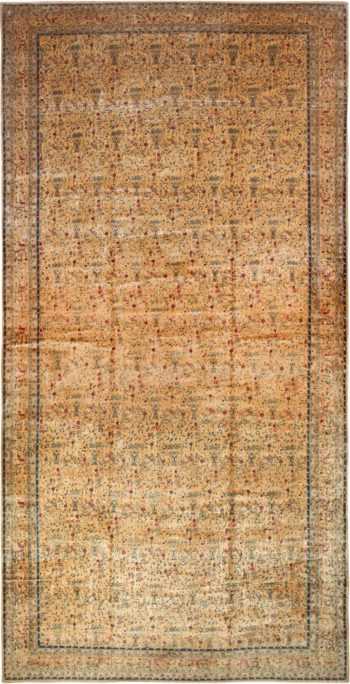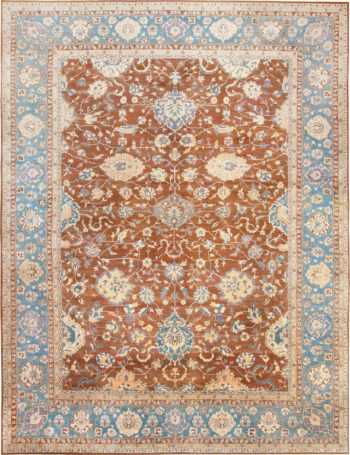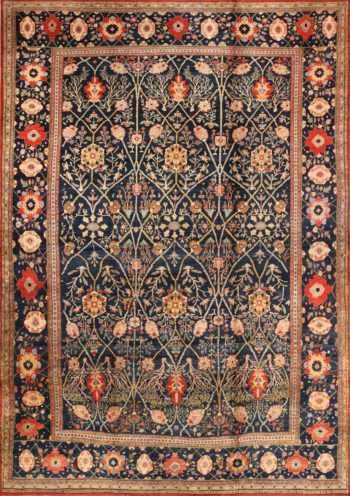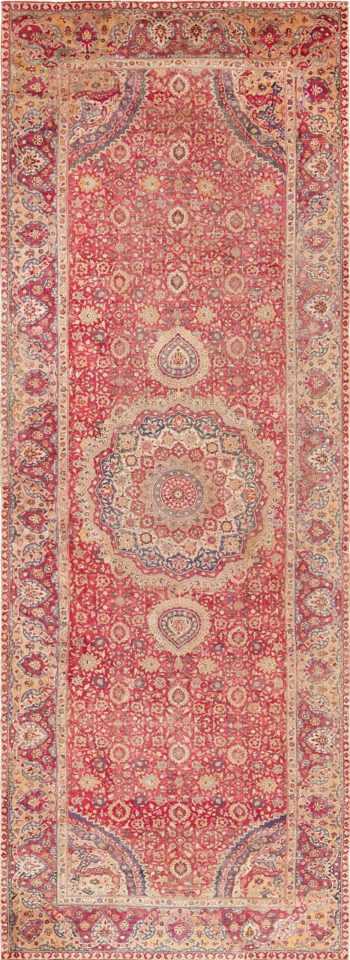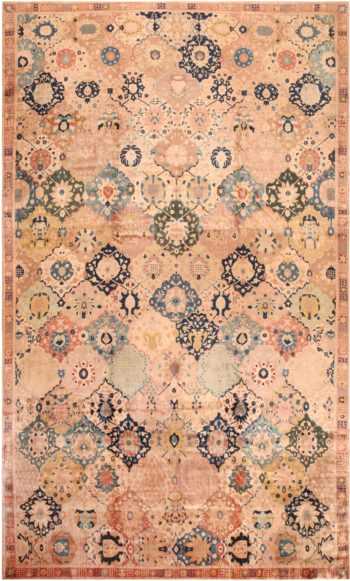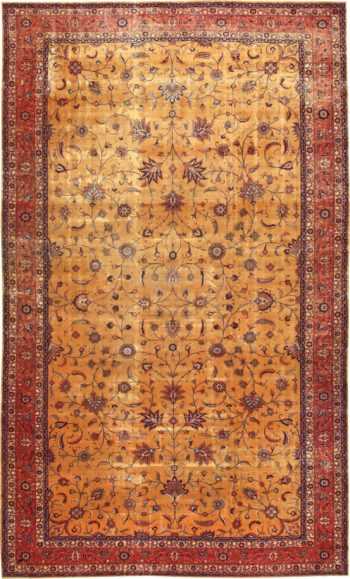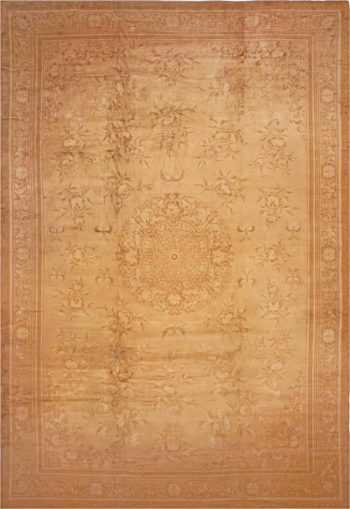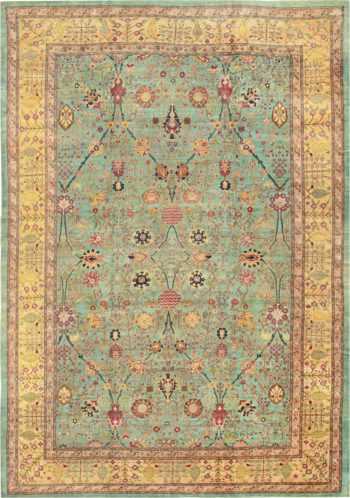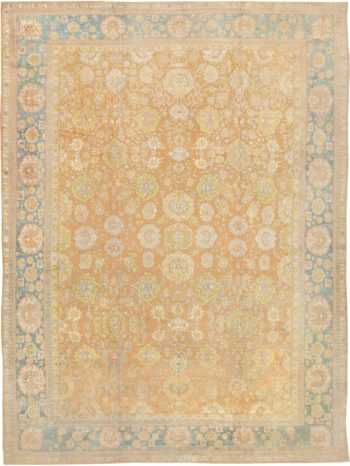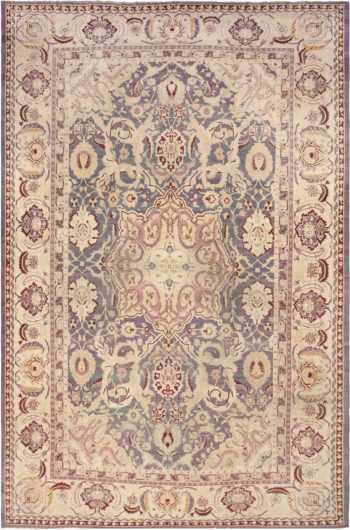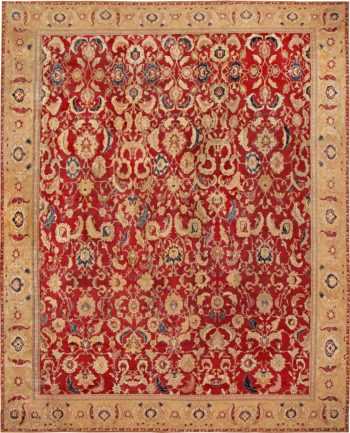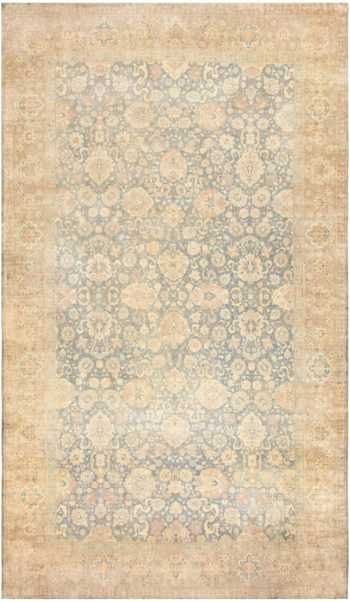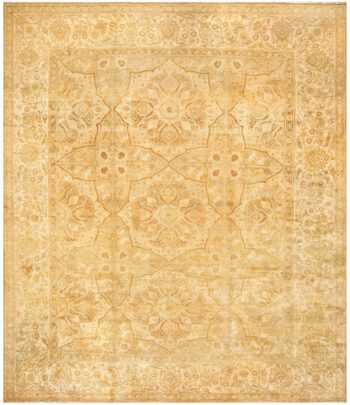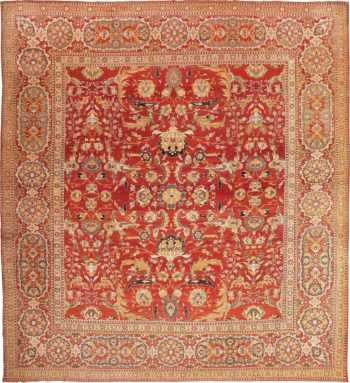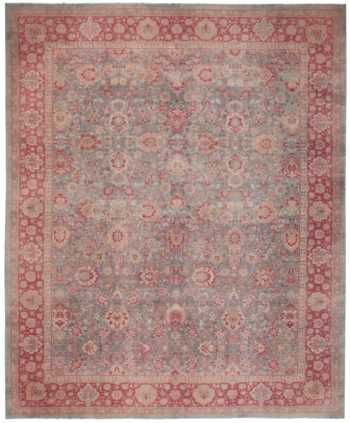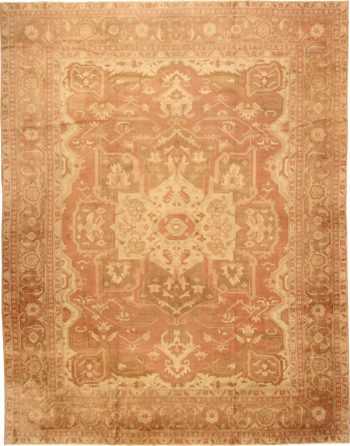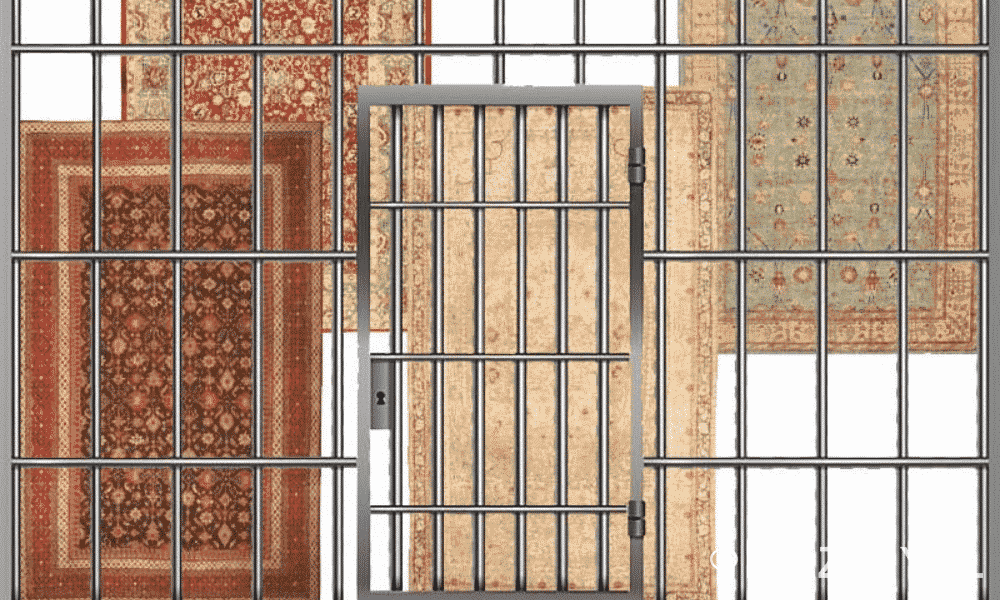View our current antique selection of rugs from India below:
Rich Red Jewel Tone Oversized Antique Allover Design Indian Agra Rug 72240
$165,000.00Size: 18 ft 2 in x 30 ft 10 in (5.54 m x 9.4 m)Fine Palace Oversized Decorative Allover Floral Vase Deign Antique Indian Rug 70305
$110,000.00Size: 16 ft x 29 ft 8 in (4.88 m x 9.04 m)Extra Large and Decorative Neutral Antique Indian Agra Carpet 50110
$96,000.00Size: 16 ft x 29 ft 6 in (4.88 m x 8.99 m)Breathtaking Oversized Large Scale Antique Agra Rug 48660
$145,000.00Size: 20 ft 8 in x 26 ft 8 in (6.3 m x 8.13 m)Long and Narrow Ivory Antique Indian Agra Runner Rug 49752
$12,500.00Size: 4 ft 6 in x 26 ft 6 in (1.37 m x 8.08 m)Oversized Navy Blue Antique Indian Agra Rug 71249
$145,000.00Size: 16 ft 10 in x 25 ft 6 in (5.13 m x 7.77 m)Large Antique 17th Century Mughal Gallery Carpet 47597
Size: 9 ft x 24 ft 8 in (2.74 m x 7.52 m)Oversized Antique Indian Agra Garden Design Rug 71772
$145,000.00Size: 14 ft 9 in x 24 ft 6 in (4.5 m x 7.47 m)Large Oversized Antique Indian Carpet 50119
$48,000.00Size: 14 ft x 24 ft 6 in (4.27 m x 7.47 m)Oversized Antique Oriental Indian Agra Rug 72413
$28,000.00Size: 15 ft 10 in x 24 ft (4.83 m x 7.32 m)Brown Antique Oriental Oversized Indian Agra Area Rug 41340
$86,000.00Size: 15 ft 2 in x 23 ft 8 in (4.62 m x 7.21 m)Large Oversized Seafoam Color Antique Indian Agra Rug 40317
Size: 15 ft 10 in x 23 ft (4.83 m x 7.01 m)Beautifully Decorative Allover Design Oversized Antique Indian Amritsar Rug 49538
Size: 12 ft 10 in x 22 ft 6 in (3.91 m x 6.86 m)Antique Indian Amritsar Hallway Runner Rug 41971
$14,500.00Size: 2 ft 4 in x 22 ft 5 in (0.71 m x 6.83 m)Rare Decorative Antique Oriental Oversized Indian Agra Rug 72521
Size: 16 ft x 22 ft (4.88 m x 6.71 m)Oversized Purple Antique Indian Agra Area Rug 45976
$76,000.00Size: 14 ft x 20 ft 10 in (4.27 m x 6.35 m)Large Red Antique Indian Agra Area Rug 44602
$95,000.00Size: 16 ft 7 in x 20 ft 10 in (5.05 m x 6.35 m)Large Antique Soft Grey Blue Background Indian Rug 47602
$68,000.00Size: 12 ft x 19 ft 7 in (3.66 m x 5.97 m)Large Gold Antique Indian Agra Rug 50261
$110,000.00Size: 16 ft x 19 ft 6 in (4.88 m x 5.94 m)Warm Floral Large Antique Decorative Indian Amritsar Area Rug 70304
Size: 11 ft 9 in x 19 ft 4 in (3.58 m x 5.89 m)Large Square Antique Agra Indian Rug 44615
$96,000.00Size: 18 ft x 19 ft 1 in (5.49 m x 5.82 m)Large Decorative Allover Design Antique Indian Rug 50024
$49,000.00Size: 14 ft 9 in x 19 ft (4.5 m x 5.79 m)Large Persian Heriz Design Antique Indian Amritsar Rug 41047
Size: 14 ft 5 in x 18 ft 8 in (4.39 m x 5.69 m)Large Size Antique Indian Art Deco Design Area Rug 44979
$120,000.00Size: 12 ft 7 in x 18 ft 7 in (3.84 m x 5.66 m)
Learn More About Antique Rugs and Carpets from India
What are the best types of antique area rugs from India?
India has a rich tradition of rug weaving, and there are several types of antique area rugs that are highly regarded for their craftsmanship, design, and historical significance.
Here are some of the best-known types of antique area rugs from India:
- Mughal Rugs: These rugs were produced during the Mughal Empire and are known for their detailed and elegant designs. They often feature floral motifs, hunting scenes, and intricate borders.
- Kashmir Rugs: Kashmir is famous for its luxurious hand-knotted rugs, often made with fine wool or silk. These rugs are known for their intricate designs, delicate patterns, and use of vibrant colors.
- Agra Rugs: Agra, a city in northern India, is known for its high-quality rugs that often feature bold designs and geometric patterns. Antique Agra rugs can be quite sought after by collectors.
- Amritsar Rugs: These rugs are known for their large size and distinctive designs. They often feature bold patterns, floral motifs, and rich colors.
- Indian Dhurries: While not exactly rugs in the traditional sense, dhurries are flatwoven textiles that are commonly used as floor coverings. They are known for their geometric patterns and bright colors. Dhurries have been produced in various regions of India.
Shop Antique Indian Mughal Rugs | Shop Antique Indian Agra Rugs | Shop Antique Indian Amritsar Rugs | Shop Indian Dhurries
There is also a group of antique Indian rugs that were designed after Persian rugs. These rugs are called “Indo-Persian Rugs” which means that the rugs were woven in India but feature specifically Persian patterns. These types of antique Indian rugs are usually characterized by their intricate floral patterns, medallions, and vibrant colors.
The quality and value of any antique area rug can vary based on factors such as age, condition, materials used, and the reputation of the weaving region or workshop. When collecting or purchasing antique Indian rugs, it’s advisable to seek the guidance of experts or reputable rug stores or dealers to ensure authenticity and make informed decisions.
Learn more about the older antique area rugs that were woven in India
Superfluous, flamboyant and elegant only begin to describe the sumptuous style of the antique rugs from India. Since the 16th century, deft craftspeople in India were competing against established weaving centers in Turkey and Persia. Led by Mughal shahs, India became a powerful artistic force known for immense creations like the Taj Mahal. Indian carpets are no less important or ambitious in their scale, complexity and superb level of color and detail.
Early Mughal carpets crafted in the royal ateliers of Agra determined the style of the first creations and subsequent rugs. As British exporters entered the market, Indian carpets featuring elaborate interpretations of traditional Persian and Turkish designs were produced in styles, colors and sizes that would appeal to Western consumers. Many antique rugs from India, hunting carpets and European-influenced art deco rugs were produced in Lahore, Kashmir, Amritsar and Agra. These regional creations are still recognized for their elegant, flamboyant style and uniquely Indian appearance, which incorporates many distinct influences.
Antique Rugs That Were Woven In India
Boasting a long and storied history, antique rugs and carpets that were woven in India are among the more intriguing of all antique Oriental rugs. Beginning with the Mughal Dynasty that ruled India from the sixteenth century, carpet production in India became an important art form practiced in select regions of the country. Seen as an exotic and faraway land by westerners for centuries, India has long drawn its share of visitors from Europe and elsewhere.
As such, many of carpets from India, especially those from early twentieth century Agra, were woven expressly for western consumers.
Rug Weaving In India
Rug weaving as an activity has been well known in India since the 1500’s. They probably got many of their ideas from the Persians, due to the fact that the designs of the Persians and the Indians are very similar. The Indians also got some of their influential ideas from parts of Asia. However, Indian rug weavers began to develop their own style. The most elaborate models got woven during the Mughal Empire between the sixteenth and eighteenth centuries. To the South, the Deccan area rugs got their distinctive looks from their designs and colors.
In India, rugs made of wool, also called “pile” rugs, were not common in the households of Indian families. They may have been brought to the region by migrants that came from different parts of Asia. The first group that invaded India from Eurasia were the Aryans, who accomplished the feat around 1800 BCE. The Aryans were a nomadic group that survived by breeding animals. Some experts think that the Aryans invented sheep breeding, as well as providing wool textiles to parts of India. Then India got invaded by the people of Hepthalite Empire, another group of nomads. By the fifth century BCE, some of the areas got taken over by the Achaemenid Empire. No one knows whether this group were weaving pile carpets or for how long. Unfortunately, no carpets have survived the passage of time. Early reference of Indian carpets came from Tang dynasty writers from China (618 – 907 AD). When the Arabian group invaded Sindh in 712, India got its first taste of Islam. The Ghaznavids, as well as the Ghaurids, helped Islam to gain a foothold in India. A geographer from the Arab region, Al-Muqaddasi, talked about Sindh carpets in 985 AD.
Experts can definitely trace Indian carpet weaving to the Mughal Empire in the early part of the 16th century. It was then that the very last person who succeeded Timur – Babur – lengthened his rule from Afghanistan to India and even started the Mughal Empire. The successor of Babur, Humayun, hid in the Safavid court of the Shah Tamasp I. Because he got support from the Savafid Empire, Humayun went back to India. Akbar the Great, his son, extended the power of the empire to parts of India and the Deccan area. Under the Mughals, Indian rug makers adopted the designs and colors of Persian craftsmen.
We now know those miniature paintings from the Akbar court show Indian carpets in use during the Mughal court. Even commercial records show that Indian rug weavers were doing business with merchants throughout Europe. Indian carpets were even portrayed in paintings by artists from the Netherlands. Indian rugs still have a royal place in many European art collections.
Most carpets that come from the Mughal period shows leaf and blossom patterns, floral motifs, all of them appearing on a red background. Depending on the particular influence, Indian rugs might get labeled as “Indo-Isfahan”, or “Indo-Persian”. T.H. Hendley studied Indian carpets, and many of the specimens he looked at were stationed in Jaipur.
Some of the Indian rugs got labeled according to the purchase date, the cost, and size. Many of the carpets that come from Jaipur come with a cotton base. The artisans also used white cotton for contrast and accents in the pile. The best carpets come from Persian rug weavers, but carpets that come with an animal design usually get called Indian. The field gets dyed with lac, which is a special type of dye that has some resemblance to cochineal dye. On Indian rugs, palmettes get seen along one of the axes. On bigger carpets, the palmettes surrounded a horizontal row that points to both the center and the outer edges. Minor figures get arranged along scrolling lines of vine work. This vine work gets adorned by leaves which are shaped by lancets. Some of the colors that we see in Indian carpets include different shades of blue and red, as well as yellow and green. In many Indian rugs, artisans will put two shades of the same color together without an outline separating the two colors.
The floral design that often appears in Indian carpets often looks a lot more natural than in the Persian rug varieties. Experts consider this feature typical of rugs that were crafted under Jahangir. Another design that you can see in these rugs are what is known as the millefleurs design, which came about between the 1600’s and 1800’s. These intricately woven carpets come with wool and silk warps. The colors also change as you travel across the rug, which forms “rainbow” bands that go across the rug. The field gets covered by flowers connected by beautiful vine work. Prayer rug designs show flower arrangements that get surrounded by trees. These motifs can not only be seen in Mughal art, but also in Mughal-era buildings like the world-famous Taj Mahal. No one can really put an exact date on Mughal-era antique rugs. That’s due to the fact that most of the rugs don’t have dates on them. But Oriental rugs eventually got woven in areas like Lahore, Agra, and Fatehpur Sikri.
When the Mughal Empire lost its power by the last years of the nineteenth century, carpet weaving as art also went on the decline. British colonial administrators actually opened factories, even some in prisons, to continue weaving rugs. After India and Pakistan gained their independence, the art of rug weaving returned to these two countries. The carpet production industry in India and Pakistan use designs from other countries. The artisans in these countries also create commercial rugs that serve a utilitarian as opposed to an artistic purpose.


